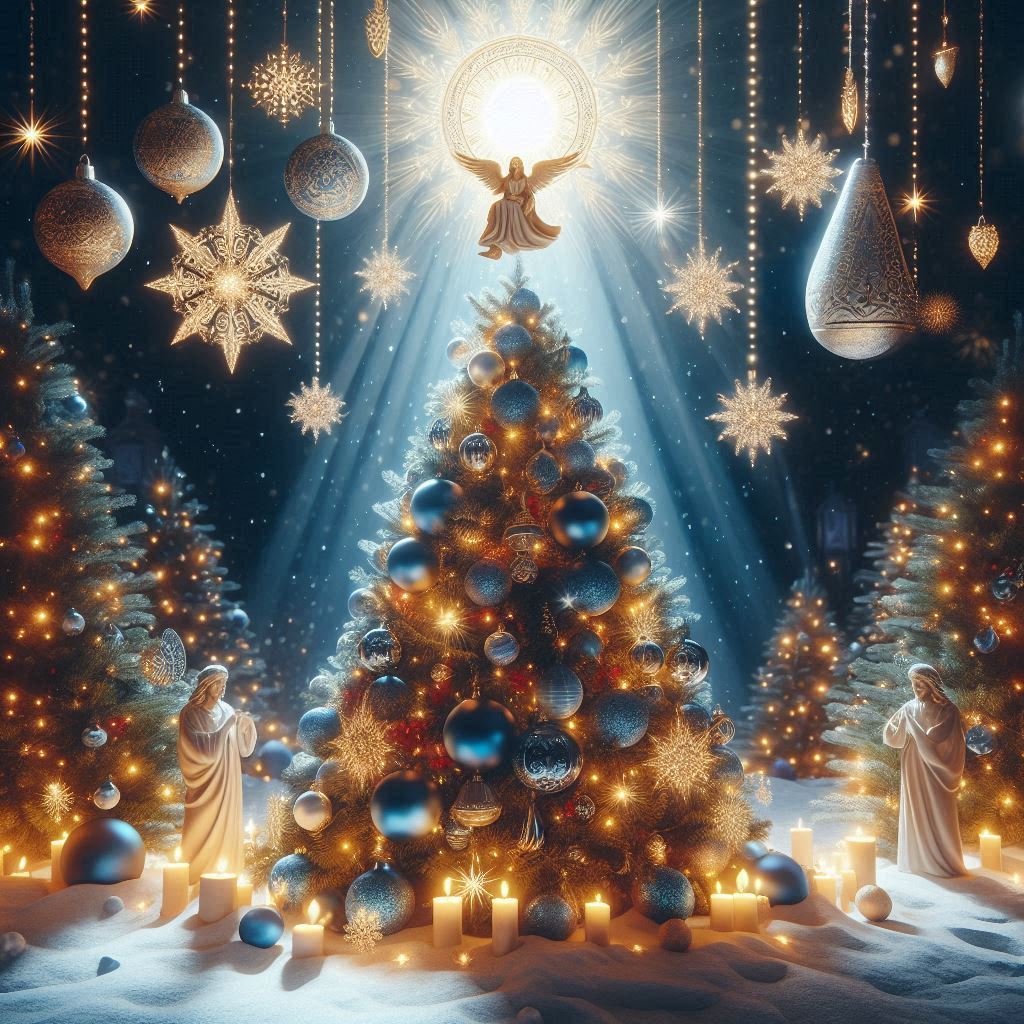
The Spiritual Significance of Christmas Trees and Their Decorations
Share
The Christmas tree is more than just a festive centerpiece during the holiday season. It carries profound meanings, many of which are rooted in religious and spiritual traditions. Each decoration tells a story, adding layers of symbolism to the cherished holiday custom.
Religious Significance
The evergreen tree itself represents the birth and resurrection of Jesus Christ. Its branches symbolize immortality and are often seen as a nod to Christ's crown of thorns, reminding us of his sacrifice and divine love.
Star
The star perched at the top of the Christmas tree holds significant religious importance. It represents the Star of Bethlehem, which guided the three wise men to the newborn Jesus. The star serves as a symbol of hope, divine guidance, and the light that leads believers toward faith.
Angels
Angels adorning the tree are a reminder of the angelic proclamation of Jesus' birth to the shepherds in the fields. They represent divine messengers and the joy brought to the world through Christ’s arrival.
Bells
Bells are associated with joy, celebration, and the call to bring back the lost sheep. They symbolize the happiness of the holiday season and the spiritual awakening Christmas brings.
Candy Canes
The candy cane is rich in symbolism. Shaped like a shepherd's staff, it represents God as the ultimate shepherd. The red stripes signify Jesus' sacrifice and the blood he shed for humanity, while the white stripes stand for his purity and divinity.
Wreaths
Wreaths, whether hung on doors or incorporated into tree decorations, represent eternal love and rebirth. Their circular shape signifies unending life, reminding us of the everlasting love of God.
Lights
The lights twinkling on the tree are more than just decorations; they represent the illumination of knowledge and faith. They also signify the warmth of family love and the spirit of togetherness during the holiday season.
Red Decorations
Red ornaments symbolize the blood of Jesus Christ, emphasizing the Savior's sacrifice and the redemption he offers to humanity.
Blue and White Decorations
Blue and white ornaments often evoke the serene beauty of winter. They symbolize purity, peace, and the tranquility brought by the Christmas season.
Gift Bows
The bows adorning gifts and trees symbolize a Christian's commitment to goodwill and the spirit of giving. They remind us of the importance of sharing joy and blessings with others.
A Tradition Rooted in History
The tradition of decorating Christmas trees dates back to 17th-century Germany. Originally a pagan custom, it was later embraced by Christian tradition, evolving into the cherished holiday ritual we know today.
This deep symbolism behind the Christmas tree and its decorations serves as a beautiful reminder of the season’s true meaning—a celebration of love, hope, faith, and the gift of eternal life through Jesus Christ.

